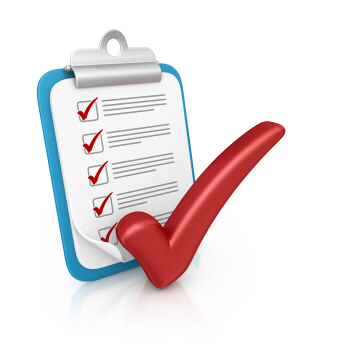Title Page
-
Document No.
-
Audit Title
-
Client / Site
-
Conducted on
-
Prepared by
-
Location
-
Personnel
Safety
-
Passage and hallways are clear and exits are not blocked.<br> 1. No equipment plugged in more than 30 mins while in hallway unless in alcove.<br> 2. No unattended WOWs in halls with chairs at them.<br> 3. No bed or equipment storage in halls.<br> 4. Must have 8' clearance in halls.<br> 5. Stairwells are clear and not used to store items.<br> 6. Medical gas valves and electrical panels are not blocked (36").<br>
-
O2 tanks stored properly (E cylinders).<br> 1. No more than 12 tanks per smoke compartment.<br> 2. "Unopened" and "opened/empty" cylinders must be properly segregated.<br> 3. All oxygen storage carts must be labeled.<br> 4. Nothing stored on top of oxygen tanks.
-
Electrical equipment has biomedical inventory sticker.<br> 1. If sticker is not found call BioMed at Ext. 24300.
-
Nutritional Services Refrigerators <br> 1. All open containers in refrigerator are dated with date opened.<br> 2. Open containers have 3 day shelf life.<br> 3. Food brought in by pts./families - if unopened, use manufacturer expiration date. If opened, may only keep for 3 days.<br> 4. Refrigerator is clean. (Contact Nutritional Services if cleaning is necessary.)
-
Do laundry and linen chutes close automatically and lock? This is a fire hazard, manually close chute door if found open.
-
Personal Protective Equipment is available and used when indicated.
-
Random check of Isolation Carts for proper storage of equipment. Is cart clean?
-
Crash Carts<br> 1. Crash cart checks completed DAILY. If unit closed indicate on log.<br> 2. O2 tank at acceptable level (Per log) & O2 tank regulator available.<br> 3. Cart locks present and secure.<br> 4. Defib. test strip ran and saved daily. Strip should be on or taped near Defibrillator.<br> 5. Green light on (defibrillator).
-
Medication management <br> 1. Medications are properly secured.<br> 2. Medication room/storage areas are locked.<br> 3. WOW medication drawers are locked.<br> 4. Opened multi-use medication are labeled with 28 days expiration date.
Proper Storage
-
Temperature logs.<br> 1. Medication refrigerator checks completed AM and PM every day.<br> 2. Blankets and fluid warmers cabinets checked daily.<br> 3. Items in warmer cabinets are discarded after 28 days.
-
Check for outdated/expired supplies (discard expired supplies).<br> 1. Medications, blood tubes, cleaning solutions, sutures, procedure trays. Please note if outdated supplies are LUM or other floor stocked items.
-
No items are stored within 18" of ceiling (stored on shelves or hanging from ceiling).
-
Items are stored more than 6" From floor and away from water, heat, and electrical outlets. Bottom shelves must be a solid surface.
-
Clean or patient care items are not stored within 36" of a sink unless a splash guard is in place to prevent contamination.
-
All linen is covered (carts covered, and lids on containers).
-
Cabinets under sink are locked or nothing is the cabinets.
Housekeeping and Tidiness
-
Patient care areas are clean, sanitized and organized.<br> 1. If not compliant contact 22069 and indicate problem and location
-
Storage areas are clean, sanitized and organized.<br> 1. Storage areas should be defined as either clean or dirty.
-
No papers or other items taped directly to the wall.
-
Hazardous waste storage and disposal <br> 1. Sharps containers not overfilled and lids secure.<br> 2. Universal waste (black boxes, blue barrels) not overfilled and lids secure.<br> 3. Chemo waste (yellow boxes) not overfilled.<br> 4. Infectious waste (red bins) properly stored.<br> 5. Spill kits present and routinely checked where needed (Formalin, Cidex OPA, acids, chemo)
Engineering and maintenance (fire extinguishers check monthly by engineering services)
-
Illumination/lighting<br> 1. All stairwell lights are functioning and lit.<br> 2. All lights in hallways, rooms are functioning and lit.<br> 3. Exit signs are illuminated and emergency exit lights are functional.
-
No stained, displaced or broken ceiling tiles.
-
Fire extinguisher has all monthly check dates written on tag. (One date per calendar month is required on tag.)
-
Is fire extinguisher regulator arrow in the "Green" section?
-
Fire doors close and latch properly.
-
No doors are propped open with door stops, trash can, etc.
Interviews and Observations
-
Emergency Plan Staff Awareness<br> 1. How do you respond to a fire alarm?<br> 2. How do you respond to a fire?<br> 3. Where is the closest fire extinguisher?<br> 4. How do you respond to a tornado watch?<br> 5. Where is your evacuation kit? Evac-U-Sled?<br>
-
How do you access Safety Data Sheets (SDS) and when would that info be needed? (Located on McLaren Intranet or by calling Hospital operator at 22222.)
-
If a patient had a compliant and requested to speak with a patient advocate what would you do? (Contact dept. manager or call patient experience at 22994.)
-
Before taking action on a verbal order or verbal report of test result, what process should be used to verify the information? (Read back or repeat back)
-
Who is allowed to turn off medical gas valves in an emergency? (Everyone, but let nursing and engineering know what you turned off.)
-
Patient Identification<br> 1. What are two patient identifiers used by McLaren?<br> 2. What is prohibited to be used as an identifier? (Physical location)<br> 3. When must specimen labeling be completed. (In the presence of the patient before leaving patient location.)<br> 4. When do I use a "time out"? (Before any invasive bedside procedure)<br>
-
Do you know where your area or department "Evacuation Plan" is located?
-
Ask staff if they know how to report a patient or facility safety issue?
-
What color outlets have generator power? (Red and blue)
-
Add signature
Migration Strategies Suggestions to help managers implement a permanent fix to reoccurring problems.
-
Black Box is full- Call EVS when black box is 2/3 full. Determine if more pickups are needed or add more boxes. If staff are putting the wrong materials into box, train staff in order to reduce waste.
-
Red Box is full EVS should be checking every Friday to make sure boxes are empty, consider increasing frequency of checks. Order more or larger red sharps boxes. If staff are putting the wrong material into the box, train staff in order to reduce waste.
-
Unsecured Medication Staff must be held accountable. Please document names to determine trends.
-
Doors stuck open and do not latch Check to verify that work order has been placed. Make sure staff are not taping or defeating locking mechanism, hold staff accountable.
-
Drinks or food at nursing station Check "hydration stations", NO drinks allowed at nurses stations. Please note if any found.
-
Dirty floors EVS needs to clean floors. Contact EVS to determine why floors did not get cleaned. If high volume, contact EVS about increasing cleaning activities.
-
Crash Cart Checks Hold staff accountable, please document names to determine trends. Assign staff to task of checking out first thing.
-
Refrigerator Checks Hold staff accountable, please document names to determine trends.
-
Blanket Warmer Cabinet or Contrast Cabinet Check Hold staff accountable, please document names to determine trends. Assign staff to complete this task.
-
Clean or Patient care items too close to sink Order splash guard. Hold staff accountable, please document names to determine trends.
-
No dates on food or drink in fridge. Hold staff accountable, document names to determine trends. Assign staff to complete this task. Discard outdated or undated items.
-
Linen in hall uncovered Hold staff accountable, please document names to determine trends. Change process to reduce to reduce incidence of problem.
-
Linen containers, lids off Order lids. Hold staff accountable, document names to determine trends.
-
Too many oxygen tanks in the room Move excess to another room or send excess back to cart. Remind only unopened O2 tanks in one rack. All others are considered empty.
-
Do NOT store items on top of oxygen cylinders. Flammable hazard. Hold staff accountable, please document names to determine trends.
-
Improper storage in room Have storage rooms assigned to staff to hold them accountable. Make sure items have a designated home.
-
Storage of items in hallway. Hold staff accountable, please document names to determine trends.
-
Chairs in hallways for wows. Cap outlets in hallways with plastic caps. This will be a visual message to not plug into the outlet yet be removable in case of an emergent need to use the outlet. Hold staff accountable, please document names to determine trends.
-
All red sharpies and bins, black and yellow boxes have lids in place when not in use. Hold staff accountable, please document names to determine trends. Order lids.
-
Corrugated Cardboard We have seen more and more of these shipping boxes throughout the hospital and in the clean utility rooms as well. De-casing should be happening elsewhere (at the point of entry) as this process posses a risk to the hospital and our patients.








